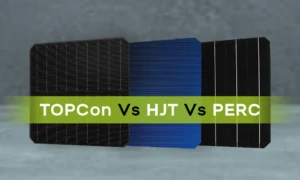Scalable Vector Graphics (SVG) is a versatile and widely used format for vector-based images. Converting raster images with PNG to SVG Converter, such as PNG, to SVG presents unique challenges due to the fundamental differences in their data structures.
This blog explores ten common challenges that arise during SVG conversion and provides comprehensive solutions to overcome them.
1. Complex Shapes and Paths
Challenge:
Complex PNG images containing intricate shapes and paths can pose difficulties during conversion, resulting in excessive nodes and file size.
Solution:
Advanced SVG editors provide essential path simplification tools to streamline the SVG conversion process and optimize vector paths efficiently. These tools intelligently analyze complex shapes and paths in the original PNG image and automatically reduce the number of nodes while preserving the overall visual fidelity of the artwork. By reducing the number of nodes, the resulting SVG file becomes more compact, leading to smaller file sizes and improved rendering performance.
However, while automated path simplification tools are effective in most cases, manual optimization may be necessary for more precise control over the vector paths. In intricate artworks or images with specific design requirements, manually adjusting anchor points and curves allows designers to achieve a higher level of refinement and tailor the output to their exact specifications. The combination of automated path simplification and manual optimization empowers designers to strike a perfect balance between file size reduction and preserving the intricate details, resulting in visually stunning and efficiently optimized SVG files. Also, please check the product designer tool by ImprintNext.
2. Image Resolution and Detail Preservation:
Challenge: Converting high-resolution PNG images to SVG while preserving fine details and smooth curves can be problematic.
Solution:
Using a PNG to SVG converter that supports high-resolution rendering and adjustable threshold levels is essential for achieving superior results in the SVG conversion process. Moreover, high-resolution rendering ensures that the converted SVG maintains the intricate details and sharpness present in the original PNG image. Furthermore, this is especially crucial when dealing with high-quality artwork, photographs, or illustrations. Additionally, the ability to adjust threshold levels allows designers to control the smoothness of curves and fine detail retention in the converted SVG.
That is to say, by fine-tuning the threshold settings, designers can strike the perfect balance between preserving intricate details and reducing the file size. Moreover, this level of flexibility empowers users to tailor the SVG output to their specific needs, ensuring that the final result is visually compelling and optimized for performance. Whether it’s converting complex illustrations or high-resolution photographs, utilizing a PNG to SVG converter. Thus, these advanced features guarantee the highest level of accuracy and fidelity in the final SVG output.
3. Color Gradients and Transparency
Challenge: SVG may struggle to accurately represent color gradients and transparency from PNG images.
Solution: Utilize an SVG editor with gradient support and opacity adjustments to mimic PNG gradients and transparency accurately.
4. Text Rendering and Fonts
Challenge: Converting PNG images with embedded text may lead to font substitution issues and inaccurate text rendering.
Solution: Choose an SVG converter that preserves text elements as text paths or outlines, ensuring accurate representation of fonts and avoiding font substitution.
5. Noise and Artifacts
Challenge: Raster images often contain noise, artifacts, or compression artifacts that might not translate well to the vector format.
Solution: Apply noise reduction techniques and use filters in the SVG editor to clean up any artifacts that persist in the SVG output.
6. File Size Optimization
Challenge: SVG files can be larger than PNG files, especially when dealing with complex or highly detailed images.
Solution: Optimize SVG files by removing unnecessary metadata, compressing data, and employing minification tools to reduce the file size without compromising image quality.
7. Vectorization Accuracy
Challenge: Accurately converting raster images to vector format can be challenging, especially when dealing with intricate patterns or irregular shapes.
Solution: Select an SVG editor that supports advanced vectorization algorithms, such as Potrace, to achieve precise and accurate vectorization.
8. Gradient Dithering
Challenge: Converting PNG images with gradients to SVG can result in banding or dithering artifacts.
Solution: Implement gradient dithering techniques in the SVG editor to create smoother transitions and eliminate banding in the output SVG file.
9. Compatibility with SVG Standards
Challenge: Not all SVG editors follow the same standard, which can lead to compatibility issues across different software and platforms.
Solution: Use SVG editors that adhere to the SVG 1.1 or SVG 2.0 standards to ensure seamless compatibility and consistent rendering across various environments.
10. Loss of Layer Information
Challenge: PNG images may contain layers that can get flattened during the SVG conversion process.
Solution: When possible, export PNG files with separate layers as individual SVG files to preserve layer information. Alternatively, use SVG editors that support layer management to organize elements effectively.
Conclusion
Converting PNG images to SVG format unlocks the benefits of scalable and resolution-independent vector graphics. However, this process comes with its set of challenges. By understanding and implementing the solutions discussed above, you can effectively overcome these obstacles and achieve high-quality SVG conversions.
Additionally, choosing the right SVG editor and optimizing the conversion process will ensure smooth and accurate rendering, thus preserving the integrity of your visual assets across various applications and platforms.














